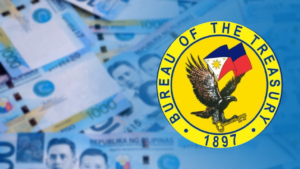The Asian Development Bank (ADB) kept its growth outlook on the Philippines for this year and next despite the support that consumption can get from softer inflation, as it flags external headwinds that can weigh on the economy.
In its flagship Asian Development Outlook released on Wednesday, the ADB retained its gross domestic product (GDP) growth forecast for its host country at 6 percent for 2024 and 6.2 percent in 2025.
If the prediction of ADB comes true, GDP growth this year would match the lower end of the 6- to 7-percent target range of the Marcos administration, but would fall short of the 2025 goal of 6.5 to 7.5 percent.
Nevertheless, the Philippines would tie with Vietnam as the fastest growing economy in Southeast Asia in 2024 and 2025.
Both countries would also beat the 5-percent average growth rate projected for Developing Asia—which refers to the 46 developing members of the ADB, for 2024. Next year, this region is forecast to grow at a slower pace of 4.9 percent.
For ADB, consumption, a traditional growth driver in the Philippines, could get some boost from lower consumer prices. The multilateral lender lowered its inflation forecast for the country to 3.6 percent in 2024, from 3.8 percent previously, partly due to lower tariffs on rice imports.
ADB said inflation was expected to ease further to 3.2 percent in 2025 compared to the previous projection of 3.4 percent.
In a statement, Pavit Ramachandran, ADB’s country director for Philippines, said “most of the ingredients for the Philippines’ sustained economic growth are in place.”
“Rising government revenues are boosting public expenditures on infrastructure and social services, increasing employment is driving consumption, and reforms to open the economy to more investments are underway,” Ramachandran said.
“With inflation slowing, the country is in a strong position to lead growth in Southeast Asia,” he added.
Headwinds
Government data showed the economy grew 6.3 percent in the second quarter. But analysts had said the figure was magnified by favorable base effects that masked the 4.6-percent growth in consumption, a pace that was uncommonly low for the Philippines.
To help stimulate household spending, the Bangko Sentral ng Pilipinas (BSP) in August cut the policy rate by a quarter point to 6.25 percent. By reducing borrowing costs, the BSP wants to encourage bank lending and consumption.
But the ADB said the Philippines would not be spared from external headwinds dragging global growth.
“External factors such as a sharper slowdown in major advanced economies and the People’s Republic of China, financial volatility due to US monetary policy decisions, geopolitical tensions, and rising global commodity prices also pose threats to growth,” the Bank said. —Ian Nicolas P. Cigaral


